Air source heat pumps provide heating for homes when paired with radiators or through ventilation ducts. But can you combine an air source heat pump with underfloor heating?
Underfloor heating systems are the best output mechanism for air source heat pumps, The lower temperature water output from an air source heat pump matches the intended water flow temperature of underfloor heating very well, leading to high-efficiency levels.
This article will explain in detail how air source heat pumps work with underfloor heating systems, operating temperatures, and their operating efficiency.
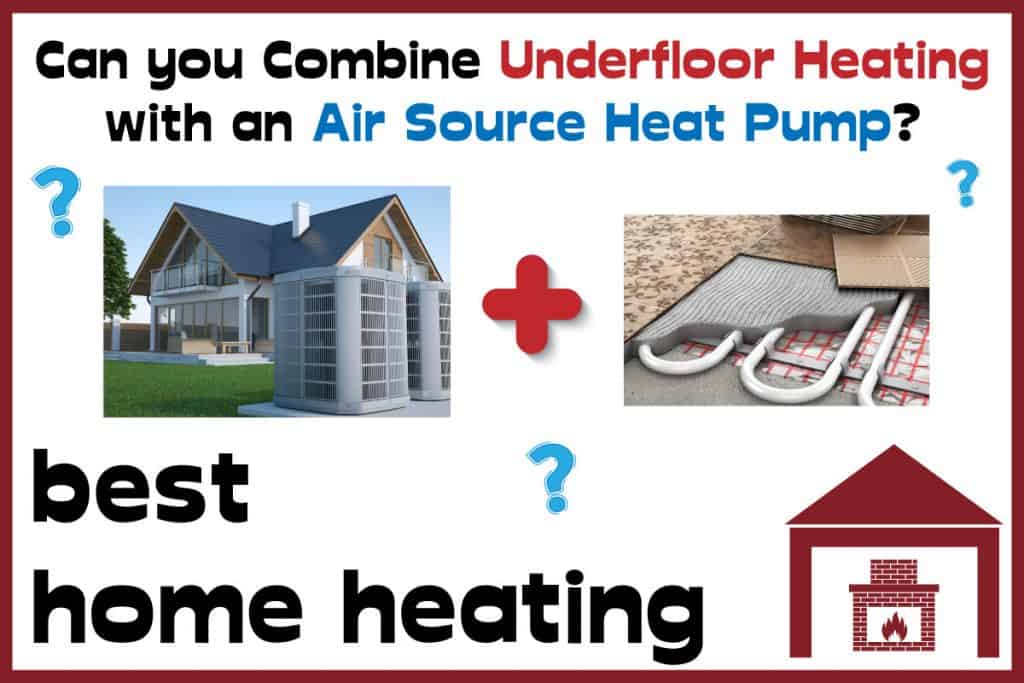
How do Air Source Heat Pumps work and how do they connect to underfloor heating systems?
How they work
Using a compressor, an air source heat pump takes heat from the air and raises it to a higher temperature. The heat is then transferred to your home’s heating system. It works like a refrigerator in reverse. Even at -15° C, it can extract heat from the air, although its efficiency dwindles at this point. Drawing heat from the ground, air, or water reduces your CO2 emissions and fuel costs.
The following are the four major steps in heat production by air source heat pumps:
- Heat is absorbed from ambient air in the atmosphere by a liquid refrigerant at a low temperature which changes it into vapor form.
- A pump compresses the refrigerant in vapor form to raise its temperature by using electricity. The heat is then released as it condenses back into a liquid.
- The heat is sent to your radiators or underfloor heating. Any remaining heat is stored in your hot water cylinder.
- After losing its heat, the refrigerant undergoes condensation, and the whole process starts again.
The heat generated from this system could also be used to heat water for bathrooms.
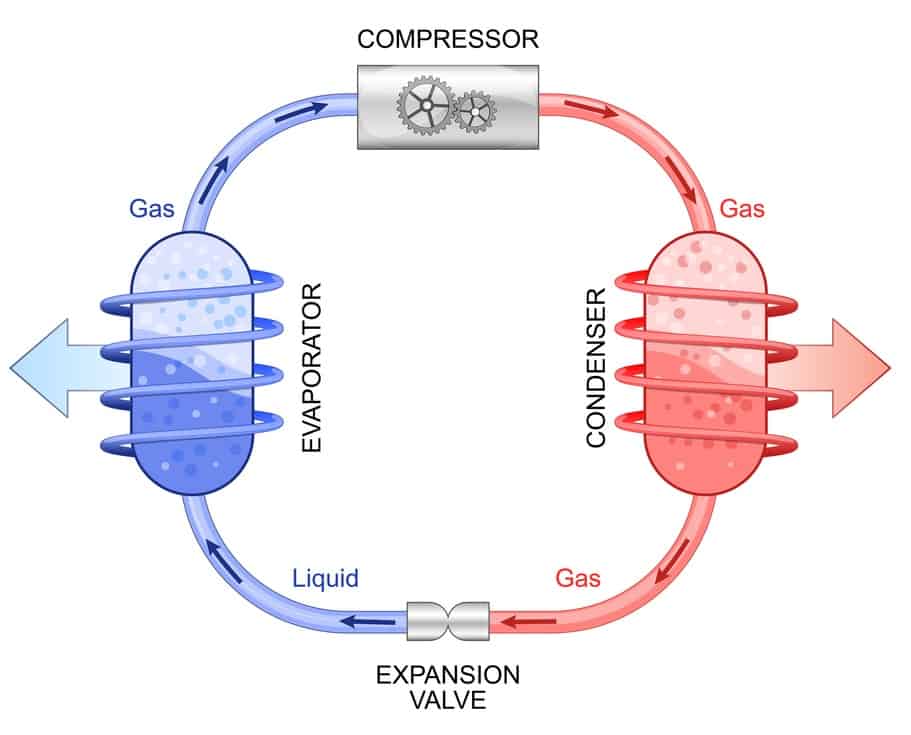
Do air source heat pumps only work with water-based underfloor heating?
Air source heat pumps are usually paired with water underfloor heating. There have been no findings or research made on if they could be used with electric underfloor heating. Basically, on the installation of these systems, the most common means for transferring the heat into the property is usually through water underfloor heating or directly sending the warm air into the home’s atmosphere.
They are usually classified as Air-to-Water and Air-to-Air systems, based on the manner of their output.
How much heat can be generated by an air source heat pump, how much warmth will this provide through the floors?
A system of underfloor heating circulates 40-45°C water across the floor area to heat the entire house. In comparison, a traditional radiator system requires much hotter water, around 70-80°C, to heat the room/s with a much smaller surface area. Therefore, combining an air source heat pump with underfloor heating is the best way to get the maximum benefit from your heat pump system.
Air source heat pumps usually operate at maximum efficiency when the outside air temperature is around 7°C. At this air temperature, they can deliver a flow temperature of 35°C to the heating systems of your house. The flow temperature is the temperature of the water being delivered to your underfloor heating system and other heating solutions at home from the ASHP.
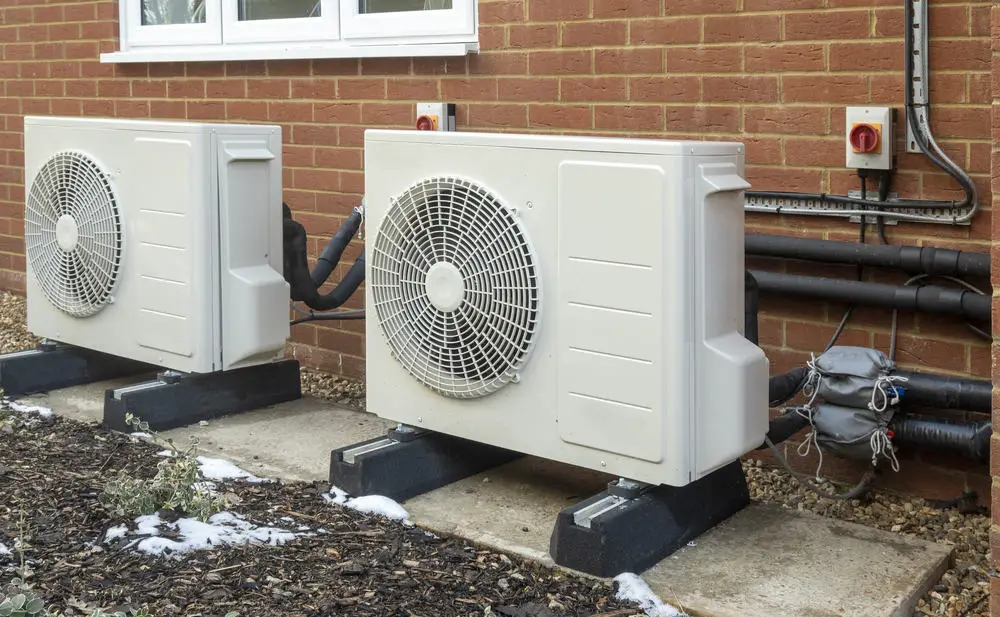
Do you need specific types of Air Source Heat Pumps for Underfloor Heating Systems?
Do you need any extra equipment?
Underfloor heating systems in conjunction with heat pumps will consist of the same components. However, since the water is supplied directly to the manifold at a relatively low temperature, no additional blending of water will be necessary at the manifold, eliminating the need for a local blending valve.
Heat pumps with sufficient pumping capacity can circulate water around the whole underfloor heating system. This needs to be checked at the design stage to determine whether a local manifold circulation pump is required.
Installing an ASHP will require about two days, from laying concrete footings, running electrical lines, and connecting the system to your electrical circuit and final commissioning, if your house is HP ready in terms of major plumbing decisions. For larger installations, a buffer tank may be necessary to prevent inefficient ‘cycling’, and its location will have been determined well in advance if it is inside the house.
Design Requirements
Usually, when using a heat pump for underfloor heating, the underfloor heating pipe should be laid at 100mm spacing throughout the property. Installing the pipes at 100mm spacing maximizes the efficiency of a heat pump. The use of 200mm pipe spacing would significantly reduce the COP. In homes with 200mm spaced installed pipes, the ASHP might not provide a sufficient level of heating.
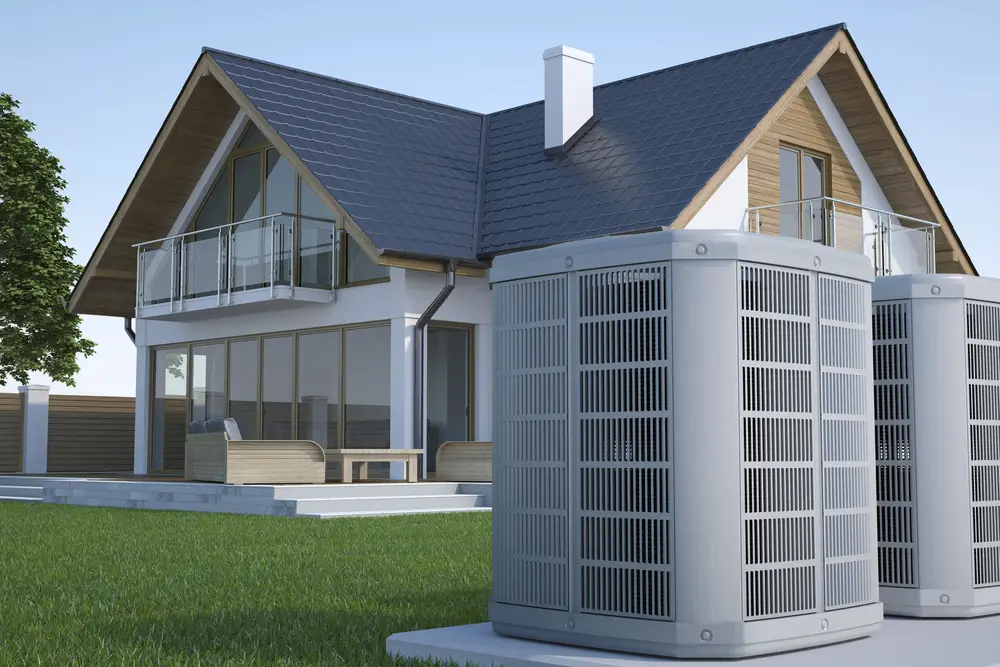
How do outside weather conditions affect the efficiency of your Underfloor heating system when using an ASHP?
The manufacturers’ efficiency data for air source heat pumps is based on 7C air temperature and 35C flow temperature. To provide a maximum advantage, the design of the underfloor heating system must be optimized. The trick is to design the underfloor heating system so that the flow temperature of the underfloor heating is as close as possible to the flow temperature for the heat pump.
Depending on the quality of the heat pump system you have installed, a heat pump can operate efficiently at a lower temperature. Usually, the temperature at which the unit is no longer able to extract heat efficiently falls between –15 and -22 degrees Celsius.
Can you Retrofit a home with an Air Source heat pump supplied by Underfloor Heating?
Air source heat pumps are most efficient when they produce heat at a lower temperature than traditional boilers, so your home needs to be well insulated and draught-proofed for the heating system to work properly. If it replaces an electric or coal heating system, the system will pay for itself more quickly.
Do you intend to install it in a new building? Installing the system in conjunction with other building work can reduce its cost.
The insulation levels in new build properties, and in general, those built within the past 10 years, are likely to be suitable for an air source heat pump. It is necessary to upgrade the insulation in older properties, such as the loft, cavity wall, and glazing.
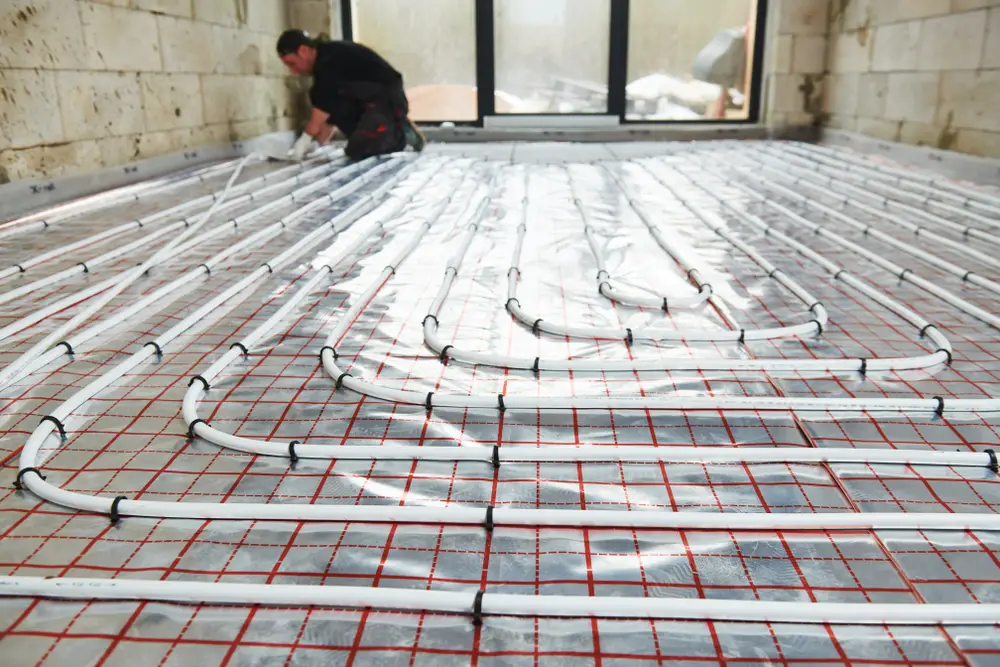
Can an air source heat pump be connected to the existing water-based Underfloor Heating systems?
Air source heat pumps can be connected to existing underfloor heating systems. Before installation, it would be best to check the spacing of the pipes. If it is more than 100 mm, the system might not work efficiently. The insulation of the system should also be properly checked to minimize heat losses in the system.
How energy efficient is it to combine these two systems?
The main advantage of using an air-source heat pump is its high efficiency in heating in comparison to typical systems such as furnaces, boilers, and electric baseboards. The coefficient of performance (COP) of air-source heat pumps varies between 2.0 and 5.4 at 8°C.
With a COP of 5, five kilowatt-hours (kWh) of heat are transferred for every kilowatt-hour (kWh) of electricity supplied to the heat pump. COPs decrease as the temperature outside drops because the heat pump must work across a greater temperature difference between the indoor and outdoor spaces. COPs can range from 1.1 to 3.7 at –8°C.
In combination with air source heat pumps, underfloor heating is 20% more efficient than when used with radiators. With a heat pump, you’ll still have to pay fuel bills because it’s powered by electricity, but you’ll save on the fuel you’re replacing.
How much would such an installation cost?
It depends on several factors, including the model you choose and its size, how much air source heat pump installation will cost. Installation complexity can also affect the price. On average, the cost of installing a typical system is around $10000. If you combine the installation with other building work, the cost will be lower.
Considerations for choosing an air source heat pump should include the savings you could make from lower energy bills. To maximize your savings, make sure that your property is well insulated and has a suitable heat distribution system.
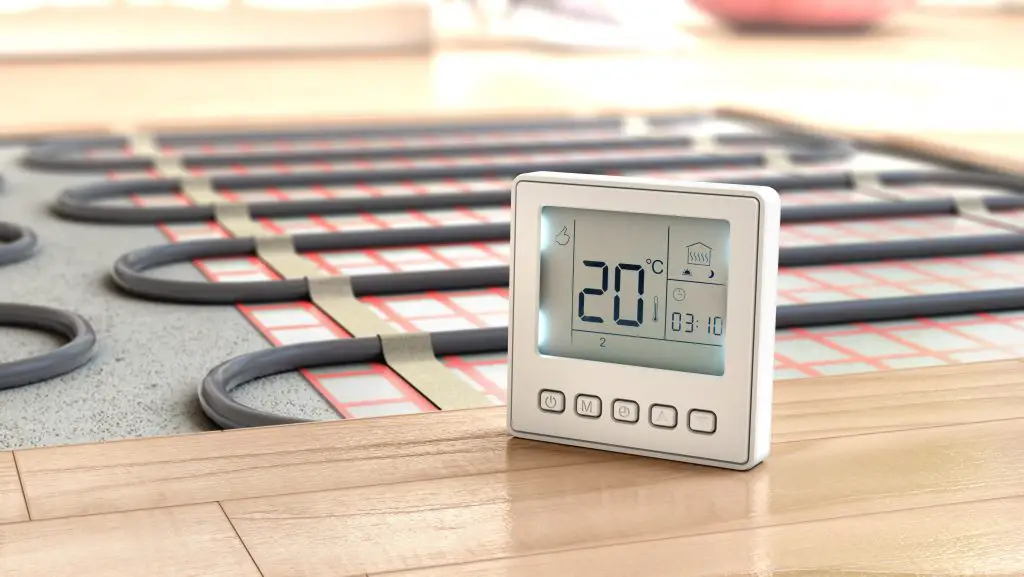
Are there any dangers in combining Underfloor Heating systems with an air source heat pump?
The installation of the heat pump unit and associated pipes plays a big role in its efficiency and longevity. You will not be able to accomplish your goals if your unit has incorrect or poor quality parts or substandard workmanship.
The system will also stop working if the electricity supply is interrupted, though this is true for any heating system since circulation pumps are powered by electricity. Underfloor heating can malfunction like any other heating system. A component of the underfloor heating system may be to blame if the heat source does not function properly.
Conclusion – Main Considerations when combining an air source heat pump with underfloor heating
Air source heat pumps extract heat from the outside air the same way a fridge does. The efficiency data for air source heat pumps is 7°C air temperature and 35°C flow temperature. Therefore it meets the heating requirements of underfloor heating. Air-source heat pumps can perform better with water underfloor systems since they require low flow temperatures.
Lots more Underfloor Heating Information Here
- What Depth is Required for Underfloor Heating?
- Turning on Underfloor Heating for the First Time – How Long to Wait?
- Can you lay Vinyl flooring over underfloor heating?
- Do Tiles Crack With Underfloor Heating?
- Can You Heat a Whole House With Underfloor Heating?
- Can You Have Underfloor Heating Upstairs?
- Will Underfloor Heating Raise My Floor? – Underfloor Heating Layers Explained
- Can I put furniture on top of underfloor heating?
- How Do I Know If My Underfloor Heating is Leaking?
- Can You Combine Underfloor Heating With a Ground Source Heat Pump?
- Is Underfloor Heating Safe?
- Does Underfloor Heating Add Value to a Property?
- Can you have Wooden Floors with Underfloor Heating?
- Can Underfloor Heating Cause a Fire?
- What temperature should Underfloor Heating be set at?
- Can I Put a Rug Over Underfloor Heating?
- How Long Does it Take for Underfloor Heating to Warm Up?
- Why is my Underfloor Heating Noisy?
- Why is my Underfloor Heating Patchy?
- How do I know if My Underfloor Heating is Working? – Common Problems & Fixes
- What can go wrong with underfloor heating?
- Can you Combine Underfloor Heating with an Air Source Heat Pump?
- Do you keep underfloor heating on all the time?
- Does Underfloor Heating work with Smart Thermostats?
- Kitchen Underfloor Heating – Should Underfloor Heating go Under Kitchen Units?
- How much energy does Underfloor Heating use?
- Underfloor Heating in Summer and Winter
- Lifespan of Underfloor Heating
